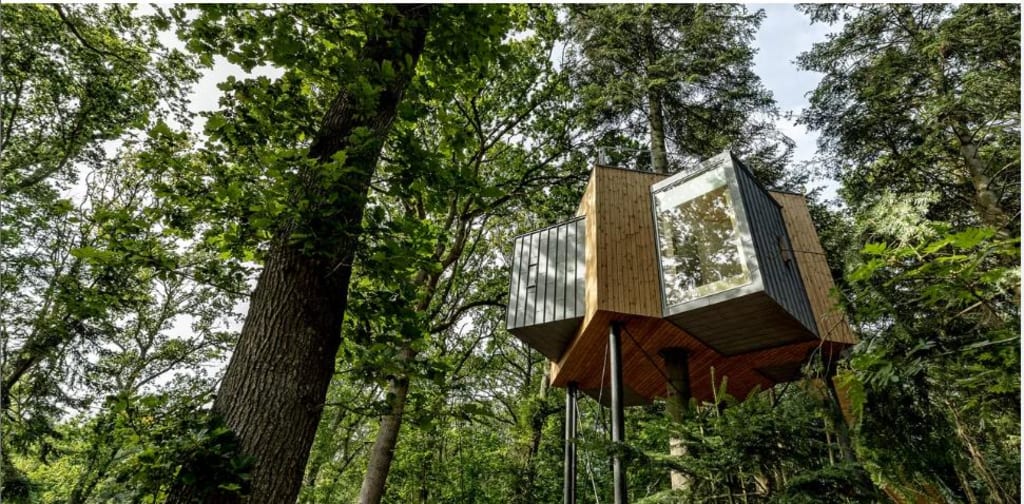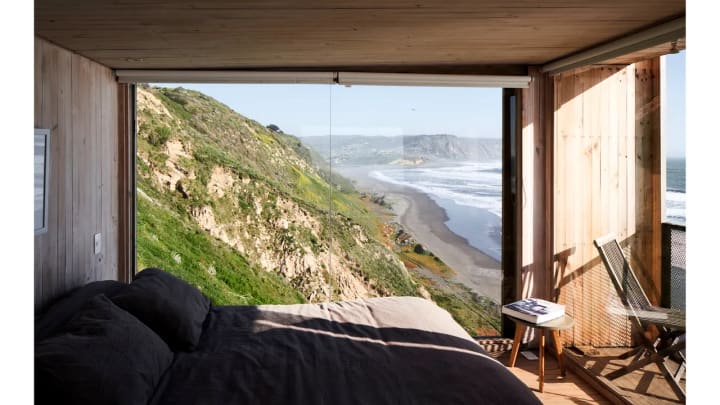
hat do rural cabins give us that we can't get at home? They're smaller than many permanent dwellings, and are likely to be more basic in their furniture, fixtures and fittings. But these perceived downsides are part of what makes them so attractive. They present a break from normal life, giving inhabitants access to a different way of being. "We are all longing for a 'third place' (somewhere that's neither our workplace nor home) which allows us to be a different person," says Robert Klanten, publisher and CEO of Gestalten, citing the kaffeehaus – or coffee shop – in the 1920s; the local bar in the 1960s; the club in the 1980s and 1990s. Today, he believes, the third place is a cabin. "We may unwind and recharge and eventually become a different person for a while or for good."
More like this:
- The Nordic look that defined freedom
- The ultimate island hideaways
- Ten visionary ideas for the future
This sentiment seems to ring true for the swathes of people around the world who are designing, building, visiting or simply ogling cabins on the page and on screen. Gestalten's latest book on the subject, Cabin Fever, co-edited by Klanten along with Elli Stuhler, shows that from Australia to Iceland, the fever still runs high.

There is plenty to salivate over in the latest crop of bijou-and-basic cabins. These designers have turned simplicity into an art form, making an austere and minimalist lifestyle seem aspirational. Is that because of the effort and love that has clearly gone into creating more with less?
"Going back to basics with design is a healthy reminder that we actually need very little," writes Stephanie Wade in the book. Certainly, the views from these structures suggest that all that's required is a pair of walking boots or a swimming costume.
However, such a lifestyle can be deceptive. For many of us, surviving with the bare minimum takes effort and forethought. "To spend time in remote places… logistically requires you to pack a few extra things," adds Wade.
Being in a safe place surrounded by wild nature makes our everyday worries disappear – Mikko Jakonen
La Loica and La Tagua cabins (by Croxatto and Opazo Arquitectos) are perched high above an otherworldly Pacific coastline in Chile; while Malek Alqadi's Folly cabins are in the southern Californian desert. Here, "the thick walls and pitched roofs of the insulated cabins make the location bearable year-round," says the architect. Meanwhile Sigurd Larsen's treetop cabins in Denmark can stand extreme weather because they have insulation and thick glass walls.

But getting up close to the elements in a remote spot is also one of the cabin's main draws. "Cabins allow you to be a guest in an impossible place, at least for a certain while," says Klanten.
Mikko Jakonen of Studio Puisto in Helsinki echoes this: "Being in a safe place surrounded by wild nature really does provoke something primitive in us. It makes our everyday worries disappear."
Even with modern building techniques, there's an appetite among architects to make the most of local materials. Indigo cabin in The Netherlands by Woonpioniers is lined with locally-sourced wood inside and out – spruce and black-stained larch respectively. And Norway's Aure Boathouse by TYIN Tegnestue is clad in Norwegian pine.
Others feature "honest" materials like glass, steel and concrete. The facades of Casa Etérea in Mexico (by Prashant Ashoka San Miguel de Allende) and Synvillan in Sweden (by Sandellsandberg Arkitekter) are made of polished steel which reflects the surrounding nature. And Sigurd Larsen hopes that the untreated wood and metal facades of his Danish tree-top cabins will become covered in moss.

This idea of working with nature is also on show near the lava formations, volcanoes and hot springs of Iceland. Studio Heima's Aska Cabin has a charred timber façade "echoing the patches of bare rock that peek out from under the snow", writes Klanten, while its roof, "planted with indigenous vegetation for insulation, embeds it within its beautifully bleak surroundings".
Meanwhile, at many sites, vast panes of glass bring that uninterrupted view – the reason why you've made the trip, most probably – even closer. Like many cabins in the book, Studio Puisto's Kivijärvi Resort in Finland has one wall entirely glazed.
Architecturally, Klanten has noticed a trend for "more vertical cabins with two floors (kitchen below, bed with a view above)". Many of these are a modern take on the traditional A-frame structure. Small sleeping areas are tucked under the roofs of Hytte Imingfjell in Norway by Arkitektværelset Imingfjell, Switzerland's On Mountain Hut by On, the Folly in California, and La Loica and La Tagua in Chile.
Cabin culture
Cabin culture has deep roots in Europe – from the Scottish Highlands to the Alpine and Nordic regions, where the first cabin structures began to appear as early as 3500BC. And across the globe, the prevailing interior aesthetic borrows from the Nordic countries.
Whether the style is pure Nordic or minimal-vernacular-with-a-twist, these architects have excelled themselves
"It is obvious that Scandinavian design had a huge influence worldwide," says Klanten. However, he notes that cabins in other places such as Latin America and Australia "are not sheer imitations of a Nordic design ethos but eager to inject, reflect and celebrate local aesthetics and traditions".

Hence the more rough-and-ready rustic charm of Portugal's Cabanas no Rio, and the polished concrete interior walls of Casa Etérea in Mexico. Interestingly, one that bucks the pale timber interiors trend is actually in Sweden. Sandellsandberg Arkitekter have painted the ceilings of Synvillan in ice-cream shades.
Whether the style is pure Nordic or minimal-vernacular-with-a-twist, these architects have excelled themselves with space layout and storage. A bunkbed with drawers beneath is hidden behind folding louvred doors at JRKVC's AnuAzu cabin in Slovakia. And in Aure Boathouse, the space under the bed is stacked with logs.
While the typical cabin location is as far flung as modern construction methods allow, there is a counter trend for those which are close to home. The book highlights "a new-found appreciation for regional getaways". As Klanten puts it, during the pandemic people began yearning to escape to somewhere, "maybe just a couple of hours away without crossing a border – a place to spend the weekend at without seeing anybody who wasn't family and friends".

Whether these structures are off the beaten track or down the road, the cabin typology has allowed for some architects to push the boat out. For wow-factor, there's the lofty, glazed, A-frame-inspired Klein A45 in the US, by international "starchitects" BIG. Or the conical Mushroom in a Chinese pine forest by ZJJZ Atelier. TYIN Tegnestue's Aure takes inspiration from a dilapidated boathouse that once stood on this spot, hence the long adaptable façade, where whole sections of wall can be raised to open onto a decked area.
In Norway, Spinn Arkitekter's Varden hiking cabin is neither pitched nor boxy. It's a little egg-shaped hut on the rocky edge of a mountain, clad in an irregular-shaped five-sided honeycomb-patterned shell. "It could have been made by industrious insects and scaled up for human use," the book suggests. In fact, it took state-of-the-art, 3-D printed models to test its construction before it was built. Cabins are not only where visitors get to play at living differently, but where architects get to play at designing differently.






Comments
There are no comments for this story
Be the first to respond and start the conversation.